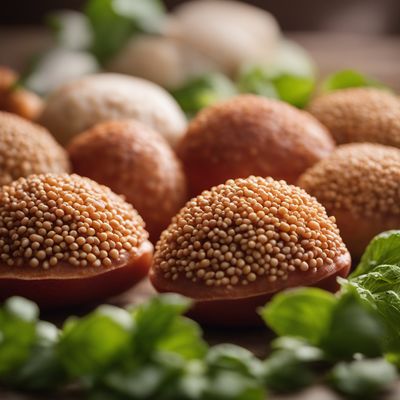
Ingredient
Dab or common dab
The Delicate Flatfish of the Sea
Dab is a small flatfish with a diamond-shaped body and a light brown color. It has a mild and slightly sweet flavor, with a tender and flaky texture. The flesh is white and delicate, making it perfect for pan-frying, grilling, or baking. Dab is commonly found in the North Atlantic Ocean and is a staple in European seafood dishes.
Origins and history
Dab has been a popular food fish in Europe for centuries. It is commonly caught in the North Sea and the English Channel. In the past, dab was considered a cheap and abundant fish, often used as a substitute for more expensive species. Today, it is still widely consumed in European countries, particularly in the United Kingdom, France, and the Netherlands.
Nutritional information
Dab is a low-calorie fish that is a good source of protein and omega-3 fatty acids. It also contains vitamins B12 and D, as well as minerals such as selenium and phosphorus.
Allergens
There are no known allergens associated with dab.
How to select
When selecting dab, look for fish with clear and bright eyes, shiny skin, and a fresh sea smell. The flesh should be firm and spring back when pressed. Avoid fish with dull eyes, discolored skin, or a strong fishy odor, as these are signs of poor quality or spoilage.
Storage recommendations
To maintain the freshness of dab, store it in the refrigerator on ice or in a sealed container. It is best to consume dab within 1-2 days of purchase for optimal flavor and quality. If freezing, wrap the fish tightly in plastic wrap or place it in an airtight container to prevent freezer burn.
How to produce
Dab is primarily caught by commercial fishermen using trawling or gillnetting methods. It is not commonly farmed, but efforts are being made to develop sustainable aquaculture practices for dab.
Preparation tips
Dab can be prepared in various ways, including pan-frying, grilling, baking, or steaming. It is often coated in flour or breadcrumbs before cooking to create a crispy exterior. Dab pairs well with lemon, parsley, garlic, and butter-based sauces. It can be served with roasted vegetables, mashed potatoes, or a fresh salad.
Substitutions
If dab is not available, you can use other flatfish such as plaice, sole, or flounder as substitutes. These fish have a similar delicate flavor and texture that can be used interchangeably in recipes.
Culinary uses
Dab is commonly used in European seafood dishes, such as fish and chips, seafood stews, and grilled fish fillets. It is also popular in Scandinavian cuisine, where it is often served with boiled potatoes and creamy sauces.
Availability
Dab is commonly available in European countries, particularly in the United Kingdom, France, and the Netherlands. It can also be found in some seafood markets and specialty stores worldwide.
More ingredients from this category

Halibut
The King of the Sea: Halibut

Sole
The Delicate Delight of Sole

Megrims
The Flounder's Delight: Megrims

Yellowfin sole
The Delicate Flounder

Plaice
"The Delicate Flounder: Exploring the Culinary Wonders of Plaice"

Turbot
The King of Flatfish

Flounders
The Versatile Flounder: A Delicate and Flavorful Catch

Brill
The Brilliance of the Sea